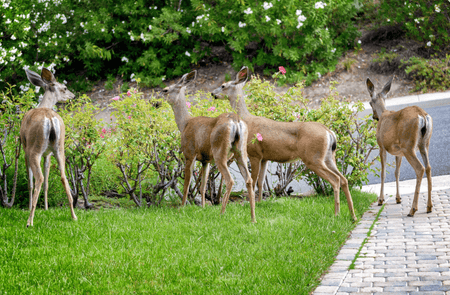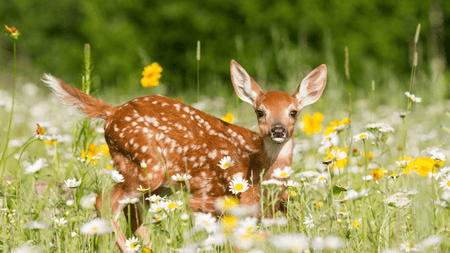The Rise of Millennial Gardening


If your first thought on hearing the word millennial is of an avocado-toast-eating teenager who’s glued to their phone, it’s time to update your thinking. Millennials might have a reputation for spending more time on digital devices than in their gardens, but millennials are gardening more than ever.
While generational labels are fluid, and there are doubts over their value, the fact is that millennials, who are currently between the ages of 23 and 38, are the largest demographic in the US. Even though the average gardener is aged 35-44, younger generations are proving surprisingly enthusiastic about getting into the garden.
The millennial garden
Interest in gardening is surging among the younger generations. There are a few reasons for this, but perhaps the most important one to consider is that millennials have entered their home-buying years. They are the largest working demographic, with more than one in three US workers being millennials.
The result is that the US gardening industry is changing. Overall, interest in gardening shot up across all demographics during the pandemic. The National Gardening Association has said that over the course of lockdowns and social distancing, participation in gardening activities increased by an estimated 18.3 million new gardeners. Of those new gardeners, Gen Z saw a 44% increase in gardening, while millennials had an incredible 65% increase in gardening.
Millennials don’t just treat gardening as another hobby, and they don’t take the same approach as the boomer generation. They want their gardening to have a positive aspect, so they plant vegetables alongside native plants. Millennials view their outdoor spaces as an extension of their homes, and they use their gardens to enhance what they view as simply another living space.
The indoor American
Americans as a whole spend a lot of time indoors. Whether it's working, sleeping, or relaxing, the average American spends around 93% of their time indoors or in their car. For all Americans, getting into the garden means being able to take a break from the stress of regular life, and for millennials, in particular, an opportunity to take a break from their screens.
Millennials are online a lot. While Gen Z is currently the generation that spends the most time online, that generation doesn’t have to balance work, home, and family life nearly as much. So even though millennials are spending almost as much time online as the younger generation, they need a break from the constant connectivity. Gardening is proving to be the answer for millions.
That’s not the only reason why millennials and gardening are the perfect match. Millennials as a generation highly value their independence, hence the popularity of growing their own food. At the same time, many of them recognize the environmental harm caused by humanity and want to help improve things. That’s why so many are choosing to add native plants to their outdoor spaces, whether they have a garden or a balcony. For millennials, gardening is proving to be a way to be more self-sufficient, while positively benefiting local biodiversity.
The evolution of millennial gardening
The millennial garden of today is very different from even a few years ago. According to the National Gardening Association, millennials first got started by planting succulents and buying houseplants. Now, those millennials have gone a lot further, and they regularly take part in a complete range of gardening activities.
And they aren’t slowing down either. According to the Axiom 2022 Gardening Insights Survey, almost 76% of millennials said they plan to plant more and are even working on expanding their garden spaces. And the focus is on environmentally friendly gardens. Just over 54% of American millennials plan to create a vegetable garden, and 26.5% want to introduce plants that help local pollinators and other wildlife.
That’s almost matched by the 23.6% of millennials who are planning to grow more native plants, and they’re increasingly using ZIP code native plant finders to get the most accurate information about the best native plants for their gardens.
You can download the full Axion 2022 Gardening Insights Survey here.
How millennials' gardening is different
Millennials don’t garden in the same way their parents or grandparents did. The first real difference is the reason for this growing interest in gardening. For most millennials, gardening is simply a way to escape the intense levels of connectivity they’re known for. But it’s more than just that - millennials have been called the ‘wellness generation’ because of their growing interest in gyms, organic foods, and self-care. Gardening for millennials is simply another form of self-care.
And it’s not just self-care. Gardening for millennials is also about connecting more with mother nature. That’s why they aren’t growing the vanity plants that the older generations were obsessed with. Instead, they’re planting pollinator habitat gardens, focusing on native plants, and practicing sustainable gardening.
Millennials, gardening, and mental health
It’s no secret and no surprise that the pandemic affected the mental health of millions. For millennials, mental health issues rose dramatically over the course of the pandemic. However, those mental health issues were on the rise even before Covid-19. So perhaps even more than their respect for the world around us and the need for self-reliance, millennials are gardening because it simply makes them happier.
In the UK, a survey carried out by an insurance company found that 50% of people who began gardening reported being happier. And 44% of the Brits surveyed said they were feeling less stress and anxiety since taking up gardening. It’s common knowledge now that gardening improves mental health, and millennials need that outlet more than ever.
Social media, millennials, and gardening
Even though millennials are using their pollinator gardens to get some temporary relief from their always-connected lives, that's not to say that technology isn’t playing a role in the millennial garden. Millennials are increasingly using gardening apps to improve their chances of gardening success, and they do a lot of online research about how to plant native plants and the food they want to grow.
But it’s social media that takes up a lot of the gardening millennials' time. Gardening simply makes for great social content. Unlike other online decor trends, such as art, throw pillows, etc, plants are alive. And when they thrive, there’s a sense of joy. Millennials want to share that joy and discuss their gardening choices with other like-minded millennials.
Gardening has never been more popular on social media. On Instagram alone, ‘plantfluencers’ are on the rise. On TikTok, a social platform dominated by Gen Z and millennials, gardening is more popular than ever. The combination of the fact that plants are naturally aesthetically pleasing (so they make for great images on both Instagram and TikTok) and that these platforms make it easy to connect and learn, is driving that growth.
From #plantsofinstagram to #plantlife and #gardenforwildlife, millennials aren’t just buying plants, they’re turning them into online content. The irony that gardening can counter the negative effects of social media is not lost on the generation that truly understands irony.
Gardening as a political statement
It’s not a new idea that gardening can be an act of resistance. The Scottish poet Ian Hamilton Finlay famously said "Certain gardens are described as retreats when they are really attacks." And millennials are well-aware of the power of a garden. In the face of climate change, and the older generations' seeming disinclination to do anything about it, the threat of unemployment, rising food prices, and the destruction of natural habitats, gardens for many millennials have become a battleground.

For millennials, gardens can touch on all of the topics that either matter to them or that they’re worried about. Everything from utopian ideals to community building, as a statement of progressive social change, and even as far as identity politics, gardens can reflect and, ultimately, can touch on all of these subjects. Planting is more than just healthy, it’s progressive, and planting is once again becoming a form of protest. It’s no coincidence that one of Banksy’s most famous images is of a masked rioter throwing flowers and not a molotov cocktail.
Back in 1999, then-mayor Rudy Giuliani began a campaign against the community gardens in New York. During the campaign, which attacked the gardens that have been flourishing since the 70s on what had once been waste ground, he said "if you were totally unrealistic you could say everything should be a garden." Millennials don’t see that as unrealistic. That’s clear when you look at the rise in guerilla gardening.
Millennials and gardening - the positive trend we love
Millennials are taking time away from their screens and heading into the garden. When they’re bored or tired, many of them head outside and get their fingers in the soil. They get closer to nature, and they marvel at how their milkweed plants attract monarch butterflies or how other pollinators, such as hummingbirds, fill their gardens.
It’s self-reliance and a rebellion against the loss of the green spaces that are supposed to be around us. And as those millennial gardeners are discovering, native plants are easier to look after, don’t require any fertilizer or harmful chemicals, and will thrive with minimal care. And all while making the world a better place.
Interested in getting started with native plant gardening? You can find the best native plants for your state, or use our ZIP code native plant finder to ensure you plant only the best plants in your outdoor space.

Find Native Plants by Zip Code
We took the guesswork out of planting native. Check your zip to see what ships!

















